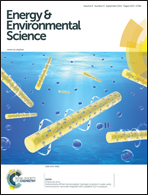Ionic liquids in the electrochemical valorisation of CO2
Abstract
The development of electrochemical processes for using captured CO2 in the production of valuable compounds appears as an attractive alternative to recycle CO2 and, at the same time, to store electricity from intermittent renewable sources. Among the different innovative attempts that are being investigated to improve these processes, the application of ionic liquids (ILs) has received growing attention in recent years. This paper presents a unified discussion of the significant work that involves the utilisation of ILs for the valorisation of CO2 by means of electrochemical routes. We discuss studies in which CO2 is used as one of the reactants to electrosynthesise value-added products, among which dimethyl carbonate has been the focus of particular attention in the literature. Approaches based on the electrochemical reduction of CO2 to convert it into products without the use of other carbon-based reactants are also reviewed, highlighting the remarkable improvements that the use of ILs has allowed in the CO2 electroreduction to CO. The review emphasises on different aspects related to process design, including the nature of IL anions and cations that have been used, the working conditions, the electrocatalytic materials, the electrode configurations, or the design of electrochemical cells, as well as discussing the most relevant observations, results and figures of merit that the participation of ILs has allowed to achieve in these processes. Several conclusions are finally proposed to highlight crucial challenges and recommendations for future research in this area.


 Please wait while we load your content...
Please wait while we load your content...